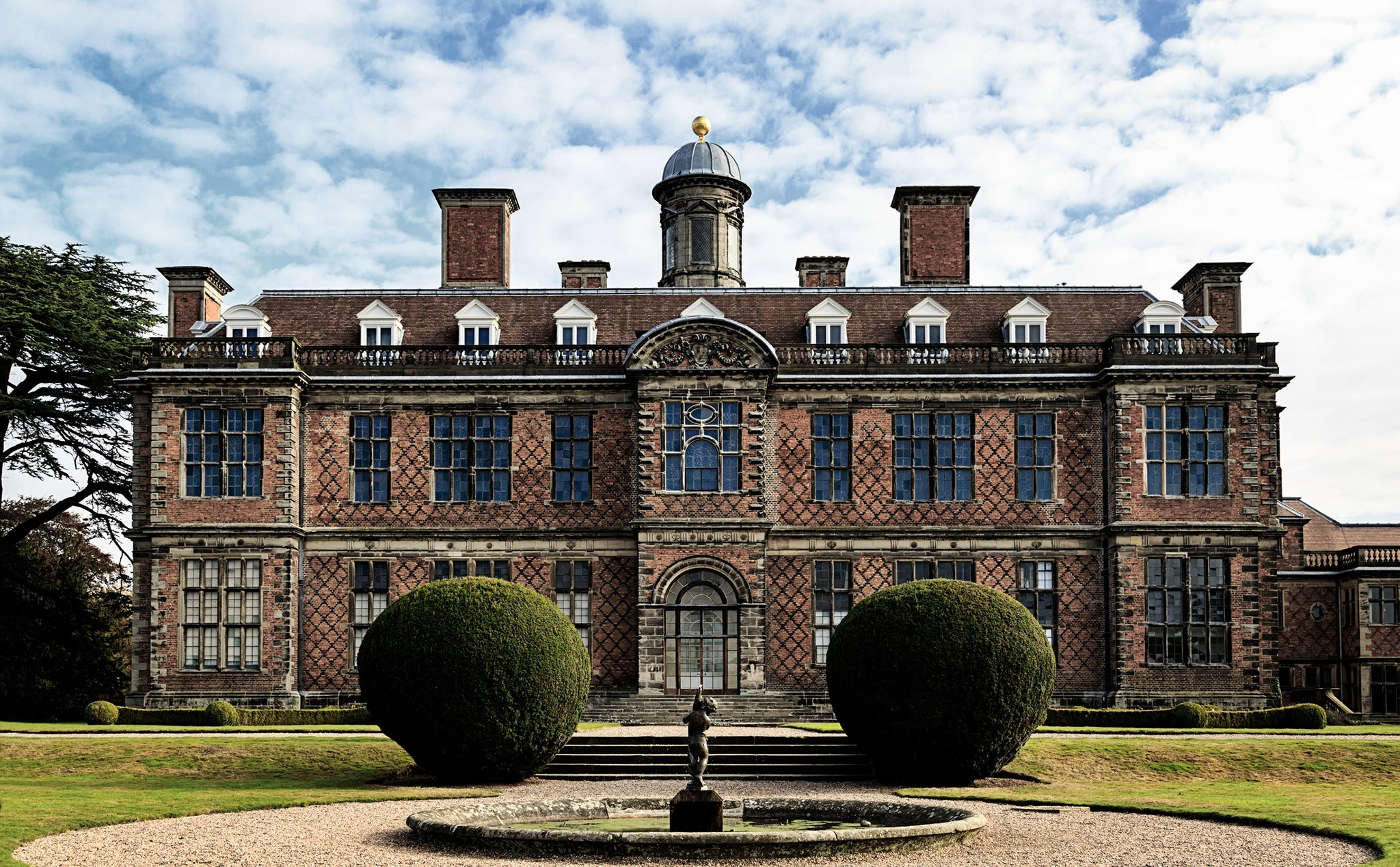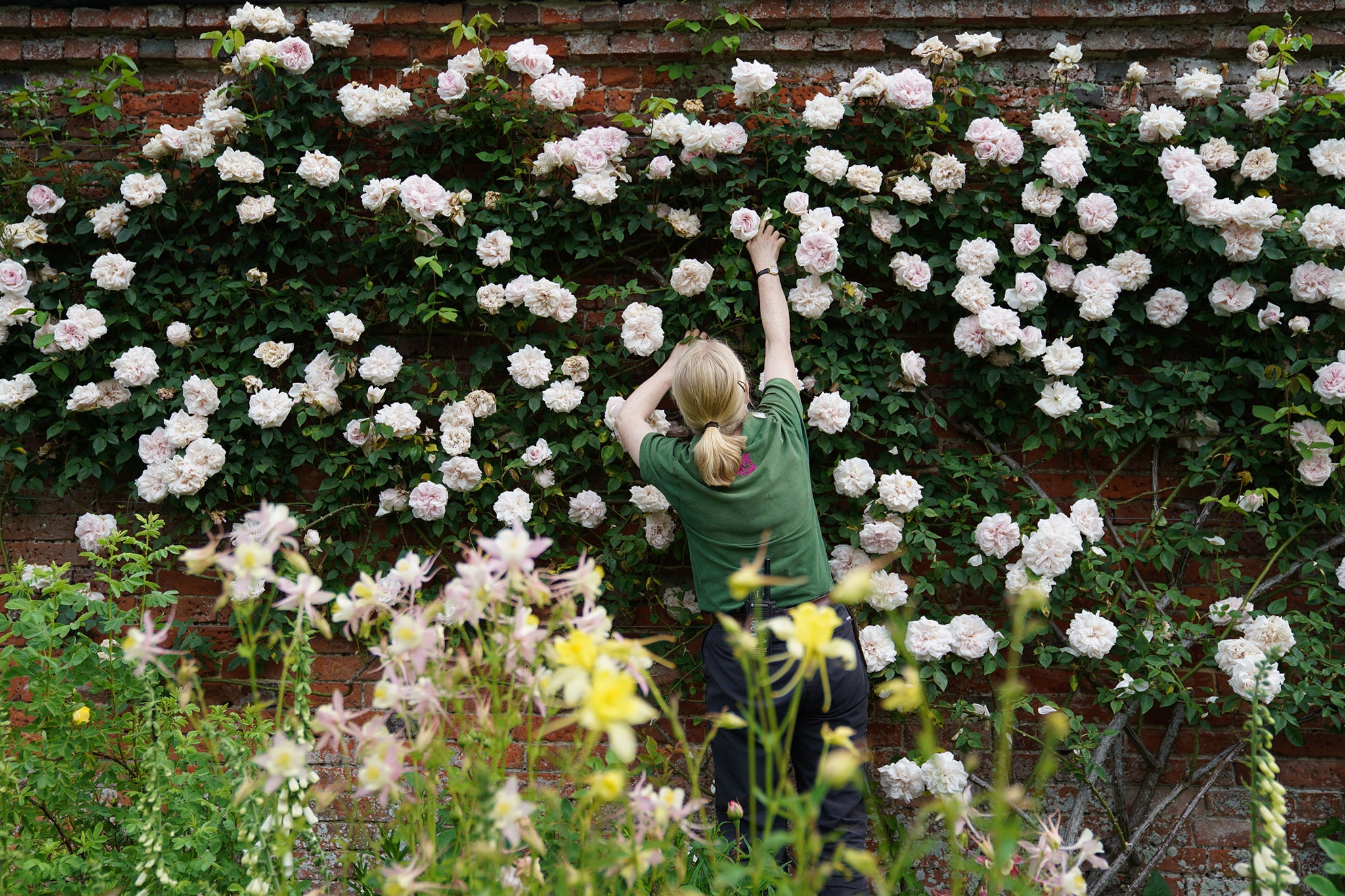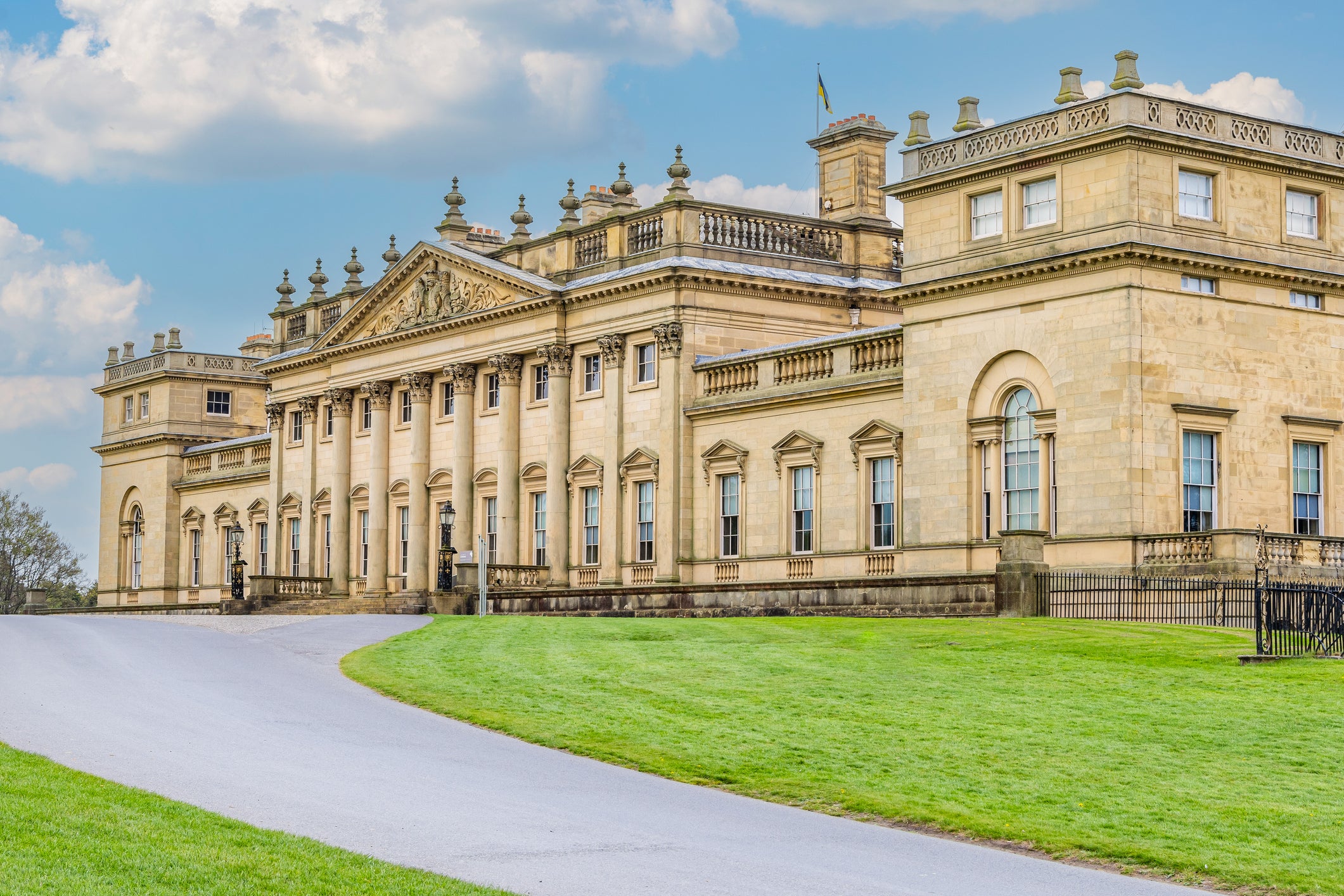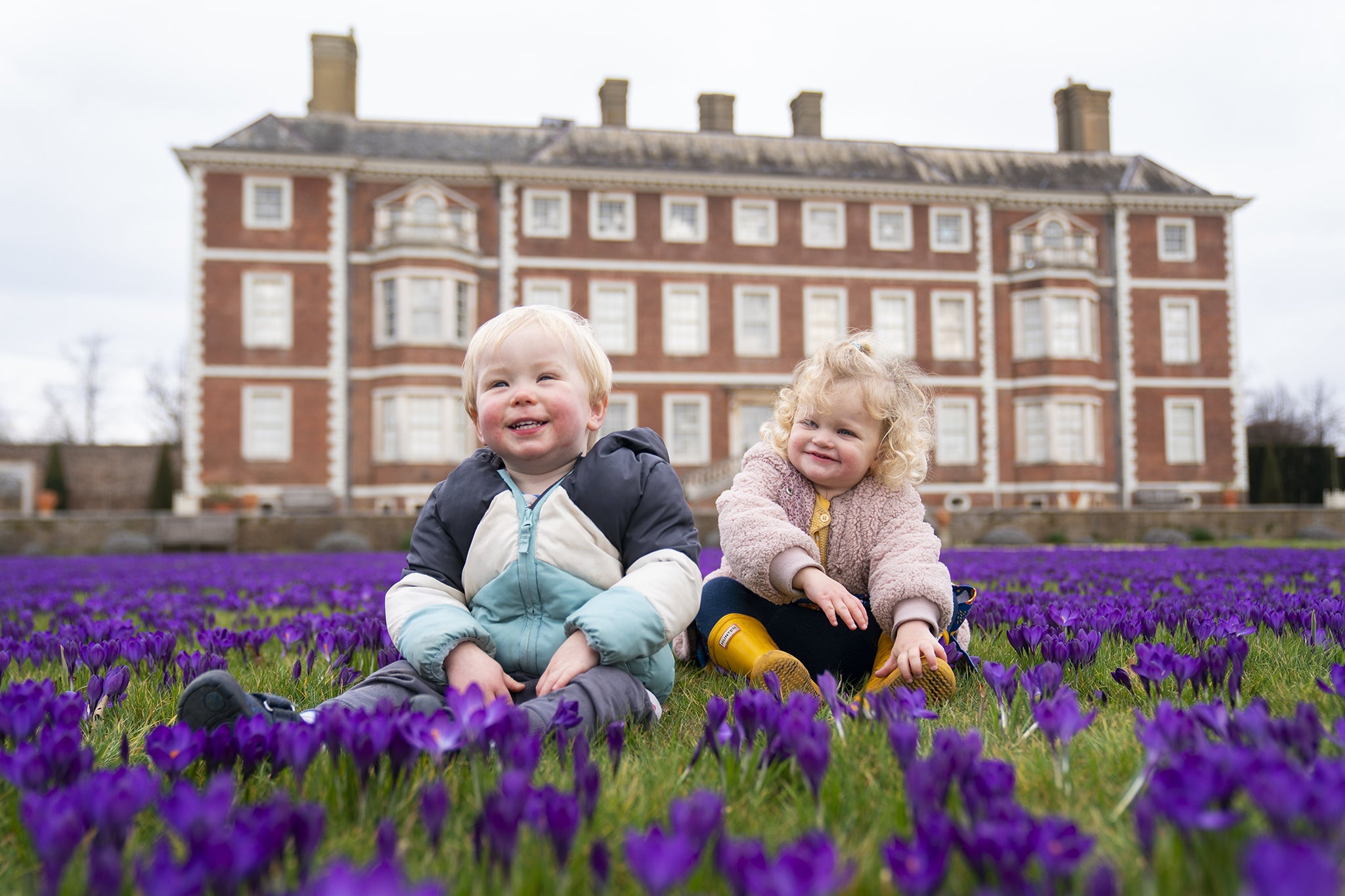The dumbed-down National Trust has become the National Distrust – but it’s not too late to save it
It got tangled up in the culture wars, transformed some of its finest buildings into childish theme parks and is serially guilty of patronising its visitors: no wonder the former boss of the charity says it’s heading in the ‘wrong direction’. But all is not lost, says National Trust lover Harry Mount

This bank holiday, I hope you are somewhere as lovely as the National Trust’s Stackpole Estate in Pembrokeshire. That’s where I am this weekend. It’s where I’ve been coming all my life – 3,000 acres of rolling farmland, seabird-haunted cliffs and the shimmering necklace of interlocking lakes that form the Bosherston Lily Ponds.
Stackpole is the National Trust at its best, fulfilling the trust’s purpose to look after buildings and landscapes forever. It was here too where I noticed, eight years ago, that something was going wrong with the trust. By the Bosherston Lily Ponds, it had erected a bright purple sign, saying:
“Return to the start, a new path you’ll take Its rocky in places, don’t fall in the lake.”
I didn’t realise it then but, in that sign, I’d happened upon a symptom of the main disaster to befall the trust in the last 15 years – an obsession with interpretation, telling a story, and bombarding visitors with messages telling you what to think.
And being unable to write properly – thus the lack of apostrophe in “Its”. That moronic sign has now, thank God, been removed – and the ponds have thankfully been returned to their pristine beautiful state.
It shows, in a small way, how the catastrophic dumbing down that has bedevilled the trust for years can be reversed. Thank God, most of the desperately low-intellect exhibitions and campaigns that the National Trust has recently spearheaded are only temporary.
Take them away – and we can go back to the way the trust was before the rot set in.
There’s no sign of that happening quite yet. Last week Sir William Proby, former chair of the charity, wrote that the National Trust was going in the “wrong direction” and that there were “serious flaws” in the way the organisation is being run.
This was largely in response to the report earlier in the month by Zewditu Gebreyohanes, a senior researcher at the Legatum Institute, which showed how the trust’s senior management had used its proxy block vote to halt democratic attempts to stop that rot.
Until last year, Gebreyohanes was the director of Restore Trust, the grassroots member-led campaign founded in 2021 to return the National Trust to its statutory aims and charitable ethos. (Full disclosure: I am a member of Restore Trust, incidentally.)
So how did it happen? How did we end up with the world’s greatest conservation charity descending into an unsavoury culture war?

The seeds of dissent were sown by two director-generals of the National Trust, Dame Fiona Reynolds (from 2001-12) and Dame Helen Ghosh (2012-18). They had both been senior civil servants before – and they imported the dead hand of Whitehall, with all its dull, virtue-signalling, fashionable forces, into the National Trust.
Ghosh was the one who said there was too much “stuff” in National Trust houses – typical of a new attitude that denigrated fine buildings and art and elevated ill-thought-out political rhetoric and the great god of access.
Even though the trust is the most successful conservation charity on earth, with more than five million members, its chief commissars became concerned that they’re the “wrong” sort of members, with, in their view, not enough young or ethnic minority members.
The point was once put to Sir Simon Jenkins – chair of the trust from 2008 to 2014 and the last senior figure in the organisation with a proper, deep understanding of historic buildings – that, regrettably, most of the members were over 50. As Sir Simon put it: “I hate to break it to you but even young people eventually turn 50.”
In other words, as we grow older, our tastes mature and we gravitate towards the past – to the best of what has been thought, said, built, sculpted and painted.
We don’t need to demean those trust buildings and their contents in a patronising bid to appeal to the young, who have their own exciting passions and haven’t yet developed an interest that will come with time.
And yet that is what the trust has largely done – to literally destructive effect – in recent years. Three country houses owned by the trust tell the melancholy story.

The greatest disaster in the trust’s history was the 2015 fire that hollowed out Clandon Park, Surrey, a rare 1730 gem by Italian architect Giacomo Leoni. Despite collecting the insurance money that could have easily paid for Clandon to be rebuilt, the trust decided to keep it as a wreck – on the misguided grounds that there was something wrong in reproduction architecture.
Then came Sudbury Hall, a 17th-century classical house in Derbyshire, just revamped as the Children’s Country House. For several months, the apostrophe-hating trust called it the Childrens Country House on their website, before a rare employee with a command of English grammar corrected the howler.
For many, Sudbury Hall has become a patronising “theme park for children” monstrosity. The elegant ground-floor saloon is now a room where children dress up and dance.
In the saloon, now a disco room, a mirror ball dangles from the ceiling, next to a neon sign blaring out the words: “Party like it’s 1699”.
It isn’t surprising that the children’s house is so, well, childish because – in an approach the trust has become very fond of – it was designed by children. A hundred “local young ambassadors” aged up to 12 “joined virtual and in-person workshops to share their ideas with the trust’s curators and curators”. The children also chose the artists for the project.
It isn’t too late to turn the tide. The bare, beautiful bones of those houses and landscapes are all still there. All it takes is to remove the dim veneer laid over them for the last 20 years
The inevitable result of this patronising behaviour happened last year at Croome Court, an 18th-century, Palladian treasure in Worcestershire. Blue scribbles were found on an 18th-century sculpture of Sabrina, a Roman nymph, and a memorial to Capability Brown, who’d carved out the landscape at Croome.
Initially, it was thought vandals were responsible. Well, it turned out that they were vandals – child vandals. But it wasn’t really their fault.
The trust, with its obsession with children being in charge, had handed out crayons at Croome – and the children had done what children do if the people in charge aren’t grown-ups. They drew a blue dress on the statue of Sabrina and made blue marks on her face.
But it isn’t too late to turn the tide. The bare, beautiful bones of those houses and landscapes are all still there. All it takes is to remove the dim veneer laid over them for the last 20 years. Bring back the clever senior staff and curators, jettisoned and replaced by people whose priorities didn’t necessarily lie in preservation.
I am not saying the trust shouldn’t move with the times, and develop as an entity. I don’t think it is wrong to want to introduce these beautiful sites to more people.

I don’t think we shouldn’t investigate and interrogate difficult histories and the slave-owning families who built many of the trust’s houses. The trust just needs to do it better than it did when it mishandled its low-grade Colonial Countryside campaign, “a child-led writing and history project”.
At Harewood House, Leeds, built with slave money, the private owner, the Earl of Harewood, produced far more detailed and sophisticated research into the slaving history of his ancestors.
In his Missing Portraits series, he commissioned pictures of black sitters, including David Harewood, the actor descended from those enslaved by Lord Harewood’s ancestors in the Caribbean.
There are lessons to be learnt from the owners of those private houses – such as Longleat, Chatsworth and Blenheim Palace – who attract huge numbers of visitors without attacking the treasures they own.
With some thoughtful reflection (and removal of illiterate signs), there is a way to down arms on both sides and set a new course for the trust.
Curate interesting exhibitions and house them in rooms which allow the great staterooms to remain unblemished is one idea. Retain history and innovate in discreet, intelligent ways – both can be done.
But first, the trust’s mistakes need to be learnt from and people, on both sides, have to be willing to climb out of their entrenched positions in this culture war. Once that happens, the nation’s houses and landscapes can be returned to their former sublime state, to be enjoyed by future generations.
Harry Mount is the author of ‘How England Made the English’ (Penguin)
Join our commenting forum
Join thought-provoking conversations, follow other Independent readers and see their replies
Comments

Bookmark popover
Removed from bookmarks